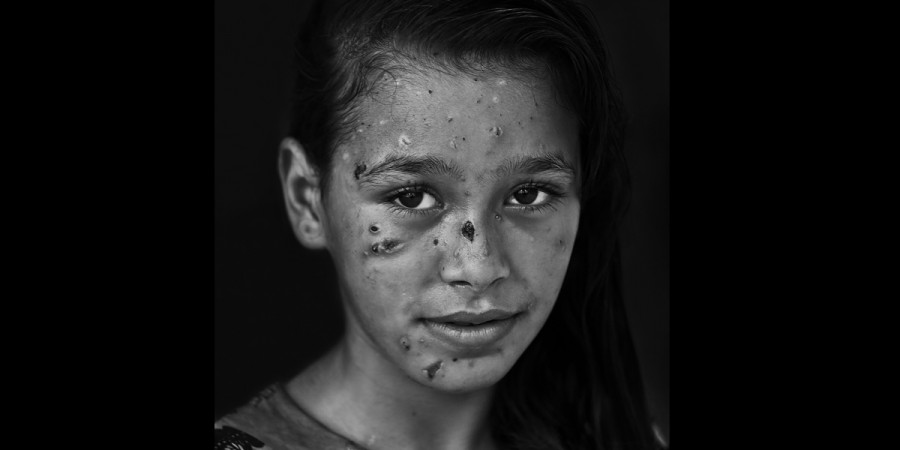In the beginning of 2015 the World Humanitarian Summit launched a photo competition to capture the “Spirit of Humanity” in the Middle East and North Africa.
The response was overwhelming and more the 459 images from all over the region were submitted. Many of the pictures showed the hardship of daily life and the suffering of children, men and women living in conflict zones or refugee camps. But despite the misery and the constant fear, the photographers managed to catch glimpses of hope and moments of joy.
Mohammed Asad Muhaisen’s photo of a young Palestinian girl who had been injured during the escalation of hostilities in Gaza last summer was picked by the jury as one of the winners. We asked the photojournalist a few questions.
- Can you tell us a bit about yourself? How long have you been working as a photojournalist and when did your passion for photography start?
My name is Mohammed Asad Muhaisen and I am 30 years old. I began working as a photographer about 10 years ago at a local news agency in the Gaza Strip in Palestine. At that time I also volunteered with a number of pro-Palestinian web sites. I studied Medical Technology but I soon discovered that I have a talent for photojournalism and since then I have won 6 awards for my photography. I achieved all this without any formal training due to the lack of photography courses in my country. - Your portrait of Dalia Khalifa is remarkable. What can you tell us about the day you took her picture?
This image of Dalia represents only a fraction of the violence that occurred during the hostilities in Gaza last summer. I took it as an attempt to expose those acts to the world. Dahlia and her family were seriously injured when two shells from the Israeli artillery hit their house while they were sleeping. The shelling was continuous and intense – targeting cars, homes and agricultural land. When both sides announced a short-term truce, I used those few hours to visit the hospital. In Gaza’s Shifa Hospital, Dahlia caught my eye, she was so young – only 9 years old. When I met her she had been in the hospital for 9 days, where they were treating her injuries. The photo was taken while she was sitting on her hospital bed. Despite the pain that she suffered, she didn’t cry and continued to look forward to a brighter future and new hope. I saw this angelic face covered with shrapnel wounds and thought that I would want to share her picture and her story with the world. - What is daily life like now for Dalia and her family?
Dalia still suffers from her injuries and her body remains riddled with shrapnel scars. But what’s worse is the more serious medical case of her younger sister – both girls need medical care, but their family is very poor. - What have been some of the toughest situations for you as a photographer?
I still remember the screams of the children in the hospital, the day I took Dahlia’s picture. The children were screaming and crying because of the lack of anaesthetics while they were waiting for their medical operations. More than 180 different types of medicines had been destroyed during the offensive. - Your own house was destroyed in the 2014 military confrontation and on another occasion you were nearly hit by a drone missile that landed a few meters away from you – what makes you continue working despite the danger?
My house and my neighbours’ houses were all destroyed and four of my photography awards were crashed under the tanks. I think, living in this dangerous situation has pushed me towards seeking and documenting the reality and the truth of what is going on in my country, especially since this is often ignored by Western Media.
You can see more of Mohammed Asad Muhaisen’s work on his Facebook and Instagram profiles.


Comments